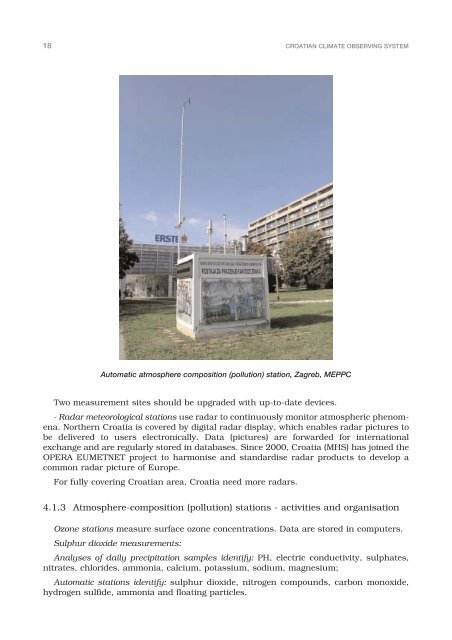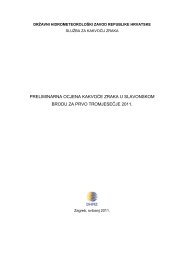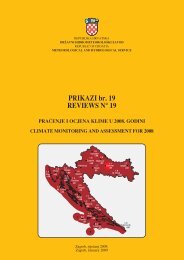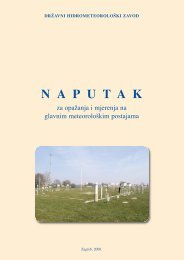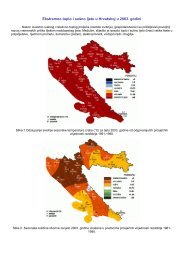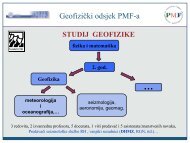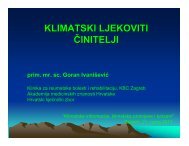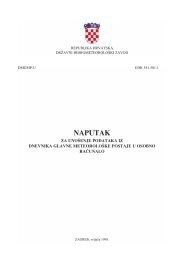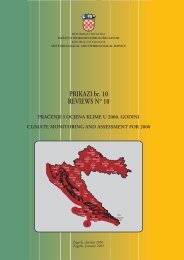CROATIAN CLIMATE OBSERVING SYSTEM
CROATIAN CLIMATE OBSERVING SYSTEM
CROATIAN CLIMATE OBSERVING SYSTEM
Create successful ePaper yourself
Turn your PDF publications into a flip-book with our unique Google optimized e-Paper software.
18 <strong>CROATIAN</strong> <strong>CLIMATE</strong> <strong>OBSERVING</strong> <strong>SYSTEM</strong><br />
Automatic atmosphere composition (pollution) station, Zagreb, MEPPC<br />
Two measurement sites should be upgraded with up-to-date devices.<br />
- Radar meteorological stations use radar to continuously monitor atmospheric phenomena.<br />
Northern Croatia is covered by digital radar display, which enables radar pictures to<br />
be delivered to users electronically. Data (pictures) are forwarded for international<br />
exchange and are regularly stored in databases. Since 2000, Croatia (MHS) has joined the<br />
OPERA EUMETNET project to harmonise and standardise radar products to develop a<br />
common radar picture of Europe.<br />
For fully covering Croatian area, Croatia need more radars.<br />
4.1.3 Atmosphere-composition (pollution) stations - activities and organisation<br />
Ozone stations measure surface ozone concentrations. Data are stored in computers.<br />
Sulphur dioxide measurements:<br />
Analyses of daily precipitation samples identify: PH, electric conductivity, sulphates,<br />
nitrates, chlorides, ammonia, calcium, potassium, sodium, magnesium;<br />
Automatic stations identify: sulphur dioxide, nitrogen compounds, carbon monoxide,<br />
hydrogen sulfide, ammonia and floating particles.


